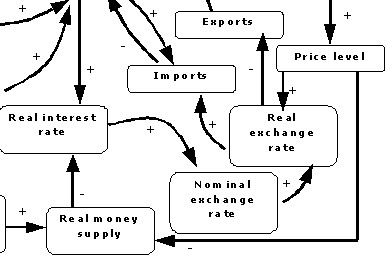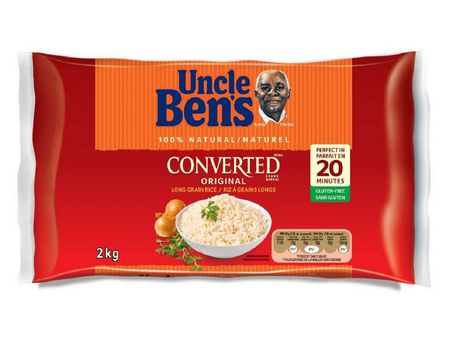Contents:


WIP isn’t immediately sales-ready and, while it counts as a current asset, isn’t very liquid. If you can’t calculate your WIP, you won’t deserve that warehouse manager salary. The terms finished goods and work-in-progress are relative terms coined to make accounting goods in different production stages easy for companies.
However, they only had 10,000 widgets when they work in progress formula accounting. They recorded the unfinished widgets as work-in-process inventory under assets on the balance sheet. Calculates the average amount of inventory on hand over a period. This figure is essential to businesses because it can help them manage their inventory levels and production needs. The average inventory level is essential to track because it can give insights into how well a company manages its inventory. In that case, it could indicate that the company needs to sell its products faster and is at risk of having to write off inventory.
Suppose you are a seller who takes care of their in-house manufacturing. In that case, it is vital to keep track of your WIP inventory, as you will need to continually stay in touch with the numbers that you are sending to your fulfillment center’s warehouse. In case the numbers are not correct, your entire inventory can be mismatched, and you will have to pay a hefty price in the form of a negative customer experience. More often than not, if your inventory is not synced with your incoming orders, it can lead to huge blunders and spoil the customer experience due to delayed deliveries and incorrect orders.
For other fulfillment operations and end-to-end logistics and warehousing solutions, you have Shiprocket Fulfillment. Every business requires specific resources to carry out its everyday operations effectively. When your business performs accurate inventory accounting, you have access to data records that can help in effective decision-making regarding all business aspects. Practical inventory accounting can improve your business operations, quick order fulfillment, adapt to a spike in customer demand, etc. Timely and accurate inventory accounting can help your business better prepare to harness investment opportunities and avenues when they present themselves.
WIP Inventory (Work-in-Progress)
If it takes longer to produce your product, you will need to keep more inventory to meet customer demand. If your supplier takes longer to deliver your product, you must keep more inventory to ensure you get all the product. For example, if a company has a beginning inventory of 100 units at the beginning of the year and an ending inventory of 200 units, the average inventory would be 150 units. The cost of goods sold is a tax deductible expense and also it includes in the price of material costs and other tax applicable.

Therefore, it is essential to understand each type of inventory and its significance in your e-commerce business. If you are a manufacturer, who makes their products and runs a D2C brand, it is essential to understand WIP or Work in Process inventory. This will help you know the production supply chain and how you can manage inventory better. Accurate inventory accounting can help you plan better for your business’s future and scalability. You can invest in technologies for higher quality, improved productivity, and enhanced efficiency with accurate accounting.
Financial overhead consists of purely financial costs that cannot be avoided or canceled. They include the property taxes government may charge on your manufacturing unit, audit and legal fees, and insurance policies. These costs don’t frequently change, and they are allocated across the entire product inventory.
How to Determine Optimum Inventory Levels
The requirement for finished goods and work in progress is taken at cash cost only and the amount of depreciation is ignored. Raw MaterialStorage PeriodValue of Raw Material stored for that period2. Work-in- ProgressProduction Period Raw Materials consumed + Labour Cost incurred + Manufacturing expenses3. Finished GoodsFinished Goods Storage PeriodRaw Materials Consumed + Labour Cost incurred + Manu- facturing expenses + Adminis- trative Cost4. DebtorsCredit Period AllowedRaw Materials Consumed + Labour Cost Incurred + Manu- facturing expenses + Adminis- trative Cost5. CreditorsDeferral Period AllowedValue of Raw Materials Purchased in that period.6.
How Nick Cassidy Seized Victory and Formula E Points Lead at … – Autoweek
How Nick Cassidy Seized Victory and Formula E Points Lead at ….
Posted: Sun, 07 May 2023 00:49:53 GMT [source]
So, a company could have multiple such cycles in a calendar year. E.g., the level of completion and the costs incurred on the same as at the end of the accounting period. During the production process, businesses may avoid overproduction and underproduction.
4 Inventories Held for Sale in the Ordinary Course of Business
By understanding these factors, you can better manage your inventory and ensure that you have the right product to meet customer demand. Other factors include the type of products you sell, the seasonality of your business, your supplier’s lead time, and your own lead time. This information can be used to benchmark inventory management practices and make decisions about best practices.
Mortara anticipating another hectic Monaco E-Prix – Formula E
Mortara anticipating another hectic Monaco E-Prix.
Posted: Sat, 06 May 2023 09:41:18 GMT [source]
The finance managers will find the text worthwhile in their pursuit of updating the knowledge about current thinking & developments taking place in the area of working capital management. For example, if the painting department is behind schedule, the frames that are already painted can be moved to the assembly line so that they’re not sitting idle. If a manufacturer is constantly starting and stopping production, it can be costly and inefficient. WIP inventory can also assist companies in raising customer satisfaction levels.
4 Stock of Raw Material and Finished Goods
The cost of goods manufactured refers to the total price you have incurred on the production of final products. To calculate the value of your current work-in-process inventory, you must know the final COGM. To determine the value of the cost of manufactured goods, add the total manufacturing costs to your beginning work-in-process stock. You can then subtract the ending work-in-process inventory from the arrived figure. To determine the cost of beginning work in progress for the accounting period.
- As there are many different components involved and many dynamic items, it can get slightly complicated.
- This approach is Based on the assumption that higher the sales level, the greater would be the need for working capital.
- We’ll also discuss the benefits of WIP inventory accounting for businesses.
- To the manufacturing costs is added to the beginning of work in process.
- As such, Devilish Decals has a larger work in process inventory each month than its inventory of finished products.
WIP inventory eats up space in a storage space or factory floor that could otherwise be used for inventory that’s ready to sell, thus increasing carrying costs. Manage orders and inventory on our user-friendly digital platform. Get access to all the crucial data in real-time while tracking orders when you sign up today.
For the accounting period the cost of ending work in process is calculated. To the manufacturing costs is added to the beginning of work in process. The total manufacturing overhead of $50,000 divided by 10,000 units produced is $5. So, for every unit the company makes, it’ll spend $5 on manufacturing overhead expenses on that unit. These costs include the physical items which are essential for manufacturing. They usually include the cost of the property where the manufacturing is taking place and its depreciation, purchasing new machines, repair costs of new machines and other similar costs.
Raw materials are consumed in production and their financial value. Let’s assume production is going on and below is consumed in production process. For the latest updates, news blogs, and articles related to micro, small and medium businesses , business tips, income tax, GST, salary, and accounting. At last, we hope with this blog we were able to solve your problem of understanding what does Cost of Goods Sold term means and why is it important for your business. Further, to advise you on one front if you are a small business and managing all your business-related activities manually. Then you might not be able to calculate the COGS as easily as you might think.
Moreover, work-in-process inventory is an asset for your company and on the balance sheet. As a standard practice, you must minimize the amount of work-in-process inventory. It’s also necessary since it gets pretty time-consuming and challenging to estimate the level of completion of a project for an inventory asset. The value of the partially completed inventory is sometimes also called goods in process on the balance sheet.
Schedule production accordingly:
WIP is something more thing more than raw material but less than finished product. Once converted into finished goods, it will be sold thereby generating revenue to the company. In order to know the manufacturing overhead cost to make one unit, divide the total manufacturing overhead by the number of units produced. The way and methods that are used to calculate the closing stock differ from each other.
Consequently, it pays to flush as much WIP into finished goods as possible prior to the end of the fiscal year. You’re correct if you guessed it’s a way to refer to unfinished business. But since unfinished business sounds a bit too ominous, manufacturers have decided to use the term work in process instead. You may also hear the term work in progress, but generally, that’s used more in the construction industry when talking about unfinished projects.
Cassidy triumphs in Monaco to take Formula E championship lead – RACER
Cassidy triumphs in Monaco to take Formula E championship lead.
Posted: Sat, 06 May 2023 15:54:12 GMT [source]
Indirect labor is the cost to the company for employees who aren’t directly involved in the production of the product. For example, the salaries for security guards, janitors, machine repairmen, plant managers, supervisors, and quality inspectors are all indirect labor costs. Cost accountants derive the indirect labor cost through activity-based costing, which involves identifying and assigning costs to overhead activities and then assigning those costs to the product. Average inventory is the average value of a company’s inventory over a period. This metric is used to track inventory levels and trends and to assess the effectiveness of a company’s inventory management practices.

The average inventory of a company can fluctuate depending on the time of year and the company’s sales cycle. For example, a company that sells Diyas and crackers will typically have a higher inventory during September and October, when demand for them is higher, due to Diwali festivities. A company’s average inventory is the inventory level that the company typically keeps on hand. The average inventory is calculated by adding the beginning inventory to the ending inventory and dividing it in two. For example, if a company’s beginning inventory is ₹10,000 and its ending inventory is ₹15,000, its average inventory is ₹12,500. One challenge of using average inventory is that it needs to account for changes in inventory levels throughout the period, which can lead to inaccuracies.
- As a business owner, you are constantly looking for methods to cut costs and increase profits.
- Finished goods are saleable, while raw materials are not in most situations.
- Raw materials are the materials that are required to turn the inventory into the final product.
To execute the manufacturing process, the cash and other assets of the company get locked into the operations. The cash is only retrieved at the end of the manufacturing process, when the goods have been sold. So, the time period between the purchase of inventory and the cash inflow after the sale is called the Operating Cycle.
